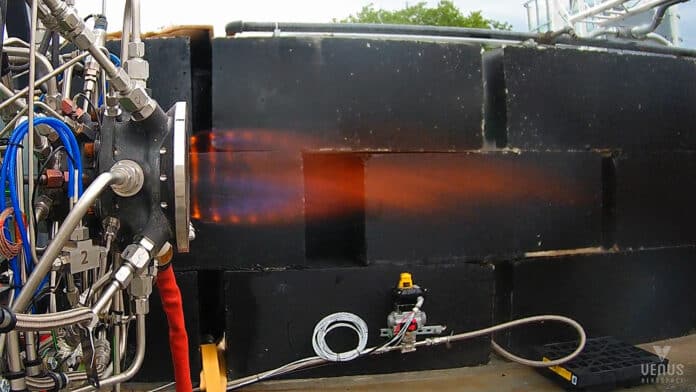The aerospace industry is undergoing a significant transformation. Many startups are working on cutting-edge technologies that have the potential to completely reshape our future. One promising development is the increasing use of reusable rockets for space exploration. And now, there’s a startup that’s aiming to bring hypersonic flight to both civilian and military applications.
The company, named Venus Aerospace, has recently achieved a major milestone in its mission. They have successfully completed the first long-duration engine test of their Rotating Detonation Rocket Engine (RDRE) in partnership with the Defense Advanced Research Projects Agency (DARPA).
The RDRE is an innovative engine that uses a rotating detonation combustion process to achieve hypersonic speeds. With this successful test, Venus Aerospace is one step closer to making hypersonic flight a reality.
RDREs have the potential to achieve 15% greater efficiency than traditional rocket engines, which could lead to reduced propellant consumption and the ability to travel farther on less fuel. This revolutionary technology could aid in unlocking the reusable hypersonic economy, and this important milestone marks a critical step in that direction.
“As we continue to push towards our ultimate mission of high-speed global flight, this is an important technical milestone for having a flight-ready engine,” said Andrew Duggleby, CTO and co-founder of Venus Aerospace. “I’m incredibly proud of our team as they continue to push forward on this world-changing technology.”
The successful achievement of the first hot-fire, long-duration engine test of Venus’ RDRE is a significant milestone. Previously, the engine had only undergone short-duration tests, which were quick and inexpensive but did not provide a complete validation of its capabilities. This latest test has demonstrated the potential of the revolutionary RDRE engine, which could have a major impact on the future of space exploration.
While not much is known about the engine, the Venus RDRE has revealed that it uses storable and stable liquid propellants. This allows for faster loading and eliminates the risk of boil-off, which is a common problem with cryogenic fuels.
The detonation rocket engine works by mixing fuel and oxidizer inside a channel in the engine assembly. The mixture is then detonated to the point where small explosions become self-sustaining. This generates supersonic pressure waves that push the machine it powers forward.
The company says, though, that it has been awarded contracts by several U.S. Government agencies to accelerate the development and potential transition of its RDRE technology for hypersonic and space missions.
